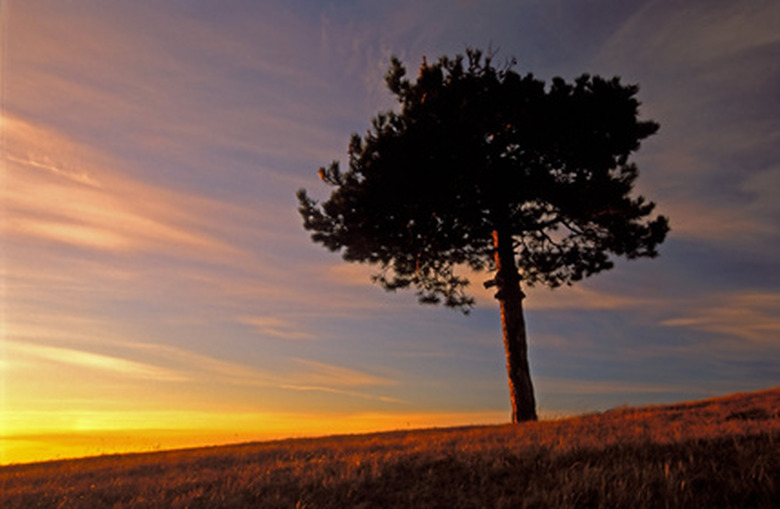How To Plant A Tree In Clay Soil
Planting trees in clay soil can be a challenge for even the most experienced gardener. Clay soils are typically alkaline, and clay's dense and heavy nature provides poor drainage and limited oxygen that can ultimately kill a transplanted tree. Successful planting depends upon choosing the right tree as well as using the proper planting techniques to ensure your tree will thrive in the landscape for many years to come.
Step 1
Select a tree suitable for your desired planting location from a local nursery or garden center in the spring.
Step 2
Check the soil pH, if your tree you selected prefers acidic soil. According to the University of Minnesota Extension Service, clay soils are typically more alkaline than acidic. Since yearly applications of acid are needed to maintain the proper pH levels for acid-loving plants, select trees that do not require any adjustments to the pH levels in your soil for best results.
- Planting trees in clay soil can be a challenge for even the most experienced gardener.
- Since yearly applications of acid are needed to maintain the proper pH levels for acid-loving plants, select trees that do not require any adjustments to the pH levels in your soil for best results.
Step 3
Choose a planting area that receives six to eight hours of full sun or light shade every day.
Step 4
Mark off an area at least twice the width of the tree root ball. With a garden tiller, break apart and aerate compacted soil to a depth of 12 inches.
Step 5
Dig out the loosened soil with a garden shovel. Be sure the hole remains at least two times wider and two times deeper than the root of the tree.
Step 6
Take the tree out of its growing container and gently loosen the roots so they can make optimal contact with the soil. Place the tree in the center of the planting area.
- Choose a planting area that receives six to eight hours of full sun or light shade every day.
- Place the tree in the center of the planting area.
Step 7
Backfill the planting area with a mixture of the tree's original potting medium, organic mulch and clay soil. Make sure that the potting medium and organic mulch together make up no more than one-third of the backfill material.
Step 8
Settle the soil using several gallons of water from a slow-running garden hose, rather than a shovel or your foot, to help keep air pockets from forming around the tree's roots.
Step 9
Cover the entire area around the tree with 2 to 4 inches of organic mulch. Keep the mulch at least 1 inch away from the tree trunk.
Tip
If your clay soil is particularly heavy, plant the tree slightly higher than the surrounding ground. With extra soil beneath the root ball, add 1 inch to height for every 8 inches of root ball size. Provide at least 1 inch of water each week for newly transplanted trees.
Warning
If transplanting local wild or farm-raised trees without containers, do not add any other planting media to the clay soil. A transplanted tree grows best in the same soil conditions as it had in its original growing area.
Things Needed
- Sapling or transplant
- Garden tiller
- Shovel
- Organic compost
- Garden hose
- Organic mulch
